February 14, 2014
Air Date: February 14, 2014
FULL SHOW
SEGMENTS
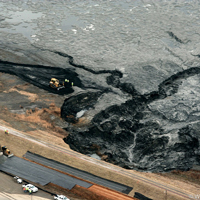
Cleaning up Coal Ash
View the page for this story
Huge Coal ash waste ponds are commonplace at power plants in Appalachian coal country, but environmental watchdogs say state and federal oversight is poor and lax. A recent spill on the Dan River in North Carolina dumped thousands of tons of toxic coal ash into a river. Amy Adams of Appalachian Voices discusses her call for reform better with Steve Curwood. (07:20)
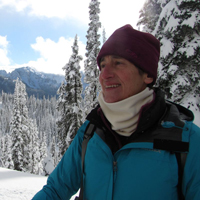
USDA Helps Growers Deal with Climate Change
View the page for this story
Climate is everything for farmers and foresters. To help growers deal with increased droughts, fires and more severe storms, the USDA is launching climate hubs in agricultural centers across the country. Ann Bartuska, one of the architects of the USDA program, tells host Steve Curwood how forestry and agriculture can cope with and be part of the solution to global warming. (06:10)
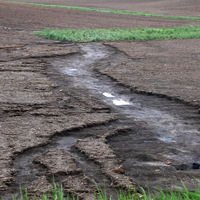
Farm Act of 2014 Provides Poor Soil Protection
View the page for this story
After years of haggling, Congress has passed and President Obama has signed, farm legislation. The new Farm Act gets rid of much-criticized direct payments to farmers, but Craig Cox of the Environmental Working Group tells Steve Curwood it’s not a win for the soil. (06:20)
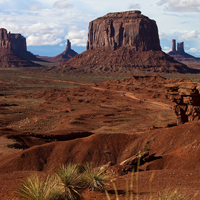
Using Bacteria to Heal the Desert
View the page for this story
Erosion is a huge problem in the dry American West. But there's hope; soil scientist Matthew Bowker of Northern Arizona University tells host Steve Curwood he's using bacteria to help bring a living crust back to the surface of the desert. (06:30)
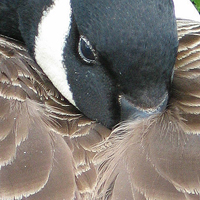
BirdNote© How Feathers Insulate
View the page for this story
When the weather's frigid, tiny birds like sparrows fluff up their feathers until they look like little round puffballs. As Michael Stein explains in today’s BirdNote©, it's how they keep warm. (02:05)

Beyond the Headlines
View the page for this story
Host Steve Curwood talks about WildLeaks, a website to help defeat wildlife poaching, Shirley Temple and more with Peter Dykstra, publisher of Environmental Health News and the Daily Climate. (04:50)
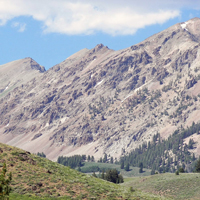
Presidential Pen Creating National Monuments
View the page for this story
Last spring, President Obama used his executive authority to declare 5 new National Monuments, effectively making them National Parks. Now conservationists hope more federal lands might be protected by elevation to National Monument status. Living on Earth host Steve Curwood talks with Ryan Bidwell from the Conservation Lands Foundation. (06:30)
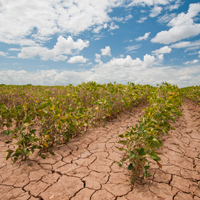
Snowshoeing with Sally Jewell
View the page for this story
As Interior Secretary, Sally Jewell has a tough job. She needs to both protect and preserve the US natural heritage, and advise on granting mining leases on federal lands. The Secretary talks shop with EarthFix’s Ashley Ahearn as they trek up a snowy peak in the Pacific Northwest on snowshoes. (05:05)
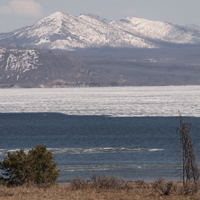
This Lake Can Sing!
View the page for this story
For over a century, visitors have marveled at the unearthly sounds "like a vast pipe organ" near Yellowstone Lake as it freezes. Reporter Jennifer Jerrett has this audio postcard. (02:25)
Show Credits and Funders
Show Transcript
HOST: Steve Curwood
GUESTS: Amy Adams, Ann Bartuska, Craig Cox, Matthew Bowker, Ryan Bidwell
REPORTERS: Peter Dykstra, Michael Stein, Ashley Ahearn, Jennifer Jerrett
[THEME]
CURWOOD: From Public Radio International, this is Living on Earth.
[THEME]
CURWOOD: I’m Steve Curwood. Burning coal pollutes the air, and the mountains of ash created by power plants pollute waterways if they're dumped into poorly managed ponds.
ADAMS: It's not a matter of if the next coal ash failure will occur, it's when. There is one sure fire way to solve all of this, and that is to dig up the coal ash ponds and move the ash to lined landfills away from our surface waters.
CURWOOD: And why the President is being asked to pick up his pen to protect more of America's scenic beauty.
BIDWELL: Unfortunately we're dealing with a historically anti-conservation Congress. For many years protecting our historic sites, our natural areas, was a very bi-partisan tradition.
CURWOOD: But not these days. Also a visit to the singing lake of Yellowstone National Park and more this week on Living on Earth. Stick around.
[NEWSBREAK MUSIC: Boards Of Canada “Zoetrope” from “In A Beautiful Place Out In The Country” (Warp Records 2000)]
ANNOUNCER: Funding for Living on Earth comes from Stonyfield Farm. Makers of organic yogurt, smoothies and more
Cleaning up Coal Ash
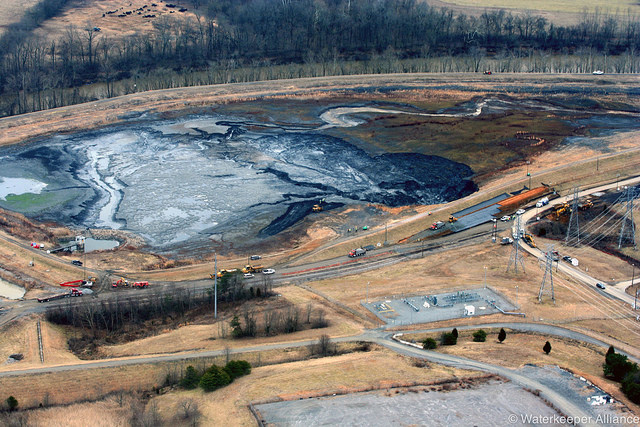
Dan River coal ash spill, North Carolina. (Photo: Waterkeeper Alliance, Flickr Creative Commons 2.0)
CURWOOD: From the Jennifer and Ted Stanley Studios in Boston, this is Living on Earth.
I’m Steve Curwood. Fresh water has been in for some hard times recently in the US. Not long ago a toxic chemical leaked into the Elk River in West Virginia, fouling the drinking water for hundreds of thousands of people. Then on February 11, about 100,000 gallons of coal slurry blackened miles of West Virginia's Kanawha River. Meanwhile in North Carolina, a storm water pipe under a containment pond at a Duke Energy power plant broke, dumping over 80,000 tons of toxic coal ash into the Dan River. That pipe's now blocked, but questions remain about the safety and regulation of coal ash ponds. Joining us now is Amy Adams, an activist with Appalachian Voices. Welcome to Living on Earth, Amy.
ADAMS: Thank you very much for having me.
CURWOOD: First, let’s talk generally about this coal ash spill. What’s the public health risk?
ADAMS: Coal ash is full of many toxic metals, including arsenic, selenium, boron, lead and mercury, and so anytime these pollutants get into your groundwater or your surface water, you’re potentially contaminating your drinking water and the swimability and fishability of those public resources.

Coal ash accumulation (Photo: Waterkeeper Alliance, Flickr Creative Commons 2.0)
CURWOOD: Now, how surprised are you that there was this massive spill. I think it’s over 80,000 tons of coal ash from the Duke Energy facility.
ADAMS: Environmental groups from the beginning have been stating that these coal ash ponds are an inherent risk because they’re located along major waterways, and they’re storing ash in unlined holes in the ground they call ponds; like the Kingston spill in Tennessee in 2008, this is the outward visible spill that the public’s eyes can see, and they can readily recognize. What’s much more insidious about these ponds is that every one that sits there that doesn’t have an open spill is still contaminating the ground water.
CURWOOD: Just how many coal ash ponds are there in North Carolina, and what’s their condition?

Contaminated water mixed with coal ash (Photo: Flickr Creative Commons 2.0)
ADAMS: There are 30 some ponds at 14 different plants, and they are all outdated, antiquated ponds that most of them were built between the ’50s and the ’60s. Those earthen dams were only meant to have a lifetime of about 50 years. So, basically, every one of these ponds is a ticking time bomb for a big break like this. But, going back, saying again that every day these things contaminate ground water even if they sit without a break or without a leak, this is one of the reasons the environmental groups have been working so hard, to try and have Duke Energy remove the coal ash from these ponds and store them in more appropriate lined landfills away from our surface waters.
CURWOOD: Now, the government in North Carolina is supposed to regulate health and safety for things like coal ash ponds. What’s their record on this?
ADAMS: Unfortunately, when Pat McCrory took office in 2013, he appointed a secretary called John Skvarla to the Department of Natural Resources...

Coal ash pouring into Dan River, North Carolina (Photo: Waterkeeper Alliance, Flickr Creative Commons 2.0)
CURWOOD: Let me just interrupt you there; Pat McCrory is the governor.
ADAMS: He is the governor, and he is also a 28-year employee of Duke...
CURWOOD:...Energy.
ADAMS: Duke Energy. Yes, Sir. And so when Pat McCrory and John Skvarla became the new lead administrators of the state environmental agency, one of the first things that Skvarla did was redefine the agency’s “customer”, and we’re no longer viewing the public and public’s resources as our customer, and the customer is now defined as the industries which we regulate. That in itself means that we’re pushing away from protection to assistance of industries, which is not the role of a state agency.
CURWOOD: Now as I understand it, you worked for a good while for North Carolina’s environmental agency. Why did you leave?
ADAMS: I was nine years with the state environmental agency, and it was the change in the focus. I went into environmental protection because I loved the state of North Carolina and its citizens, and I wanted to be able to protect the resources so that the citizens’ rights to clean air and clean water were protected. I could not in good faith continue to work where I was being asked to protect industry instead of protect the public and the resources that I loved.
CURWOOD: What federal regulations, if any, affect the coal ash ponds?

Pipe polluting Dan River with coal ash (Photo: Waterkeeper Alliance, Flickr Creative Commons 2.0)
ADAMS: That’s another thing environmental groups have been working very hard on, and it actually also took a lawsuit against the EPA to push them to issue regulations. After the coal ash spill in 2008, the EPA made the promise that it would enact strong federal regulations on coal ash. Here we are in 2014, we’ve had multiple spills, we’ve had more groundwater exceedances, and we still have not received any federal guidance or rules from the federal government, from the EPA. So we are still awaiting EPA’s decision on how to regulate not only the storage of coal ash, but also effluent or the discharge that come from these coal ashes.
CURWOOD: Now how many people live near these coal ash ponds or in the watershed of where you’re concerned there are releases of toxic materials?
ADAMS: Well, I’ve said there are 14 sites across North Carolina. There are over 100 sites across the southeast. There’s hundreds of communities, thousands of people throughout the southeast and the United States that are in danger of health concerns just from living near a coal ash pond. The EPA put out a report a couple of years ago that said if you live within three miles of a coal ash pond, you have a one in 50 chance of getting some form of cancer, which is above the EPAs own health standards.
CURWOOD: What should be done now going forward? We’ve had this spill, I gather it’s not at least leaking, frankly, into the river right now, but there are all these coal ash ponds there. What should be done going forward?
ADAMS: It’s not a matter of if the next coal ash failure will occur, it’s when. And so there is one surefire way to solve all of this, and that is to dig up the coal ash ponds and move the ash to lined landfills away from our surface waters. It’s the only guarantee we have that they will no longer contaminate our ground and surface waters.
CURWOOD: And how much will that cost?
ADAMS: It only actually costs a fraction of what the industries say that it does, and one of the supporting facts for that is that in South Carolina, both Santee Cooper and S.C. Energy have agreed to remove all of the coal ash from unlined ponds adjacent to surface waters in South Carolina. So if two of the three largest utilities can do it, certainly Duke who is one of the most profitable utility companies in the nation has the resources to do the same as its smaller partners in South Carolina.
CURWOOD: Well, I want to thank you for taking the time with us today. Amy Adams is the North Carolina Campaign Coordinator for the environmental group, Appalachian Voices.
ADAMS: Thank you.
CURWOOD: We called Duke Energy. Spokesperson Lisa Hoffman told us Duke has yet to make a final decision about relocating coal ash into lined ponds, but assured us the company constantly monitors water quality near its operations.
Related link:
More About Appalachian Voices
USDA Helps Growers Deal with Climate Change
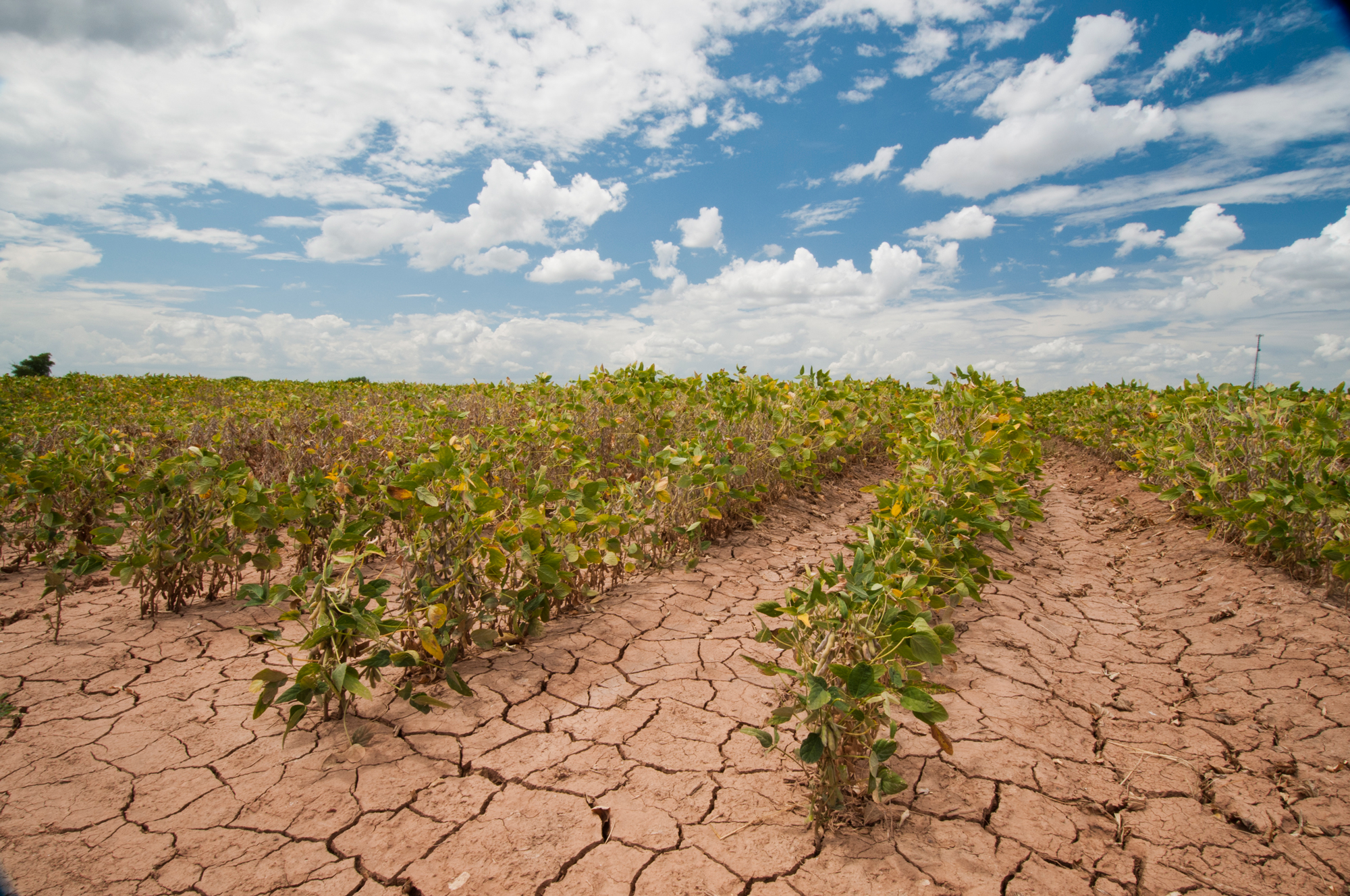
Soybeans struggling to grow during drought (photo: USDA)
CURWOOD: Tom Vilsack, Secretary of the United States Department of Agriculture, recently announced the creation of seven regional climate hubs in the US to help farmers and foresters reduce emissions and cope with climate change. The hubs will be based in Durham, New Hampshire, Raleigh, North Carolina, Ames, Iowa, Fort Collins, Colorado, El Reno, Oklahoma, Corvallis, Oregon and Las Cruces, New Mexico. Ann Bartuska, Deputy Under Secretary for Research, Education and Economics at USDA says the hubs will address a bunch of growing concerns.
BARTUSKA: It's drought, it's flooding, it's temperatures higher that we expect, cooler temperatures than we expect. That is really at the nexus of what we do, which is being able to grow crops, grow forests, and have an active private land and public land base that is very functioning and working landscapes, and so being able to address these kinds of changes and to anticipate is something that we really see being important to be able to do our mission.
CURWOOD: How is climate change impacting agriculture, forestry so far now in the US?
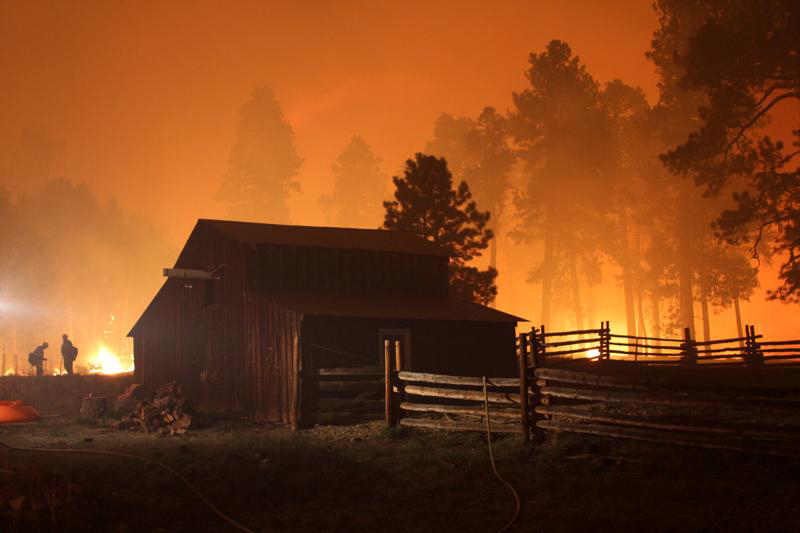
Climate change has made wildfire a year-round problem in much of the West (photo: USDA, Valess Calera Trust Kristin Honi)The USDA’s Regional Climate Hubs will help farmers deal with the impacts of climate change, like drought (photo: NOAA)
BARTUSKA: Well, one example, I’ll speak to forestry first, we are seeing a much longer fire season, and we’ve already been having fires continuously in California, in fact I think we have now a 12-month-a-year fire season in California. It’s not only the length of the fire season, but the intensity, and so that is a significant part of our role. From the agricultural side, I mean one of things that we’re blessed with in this country is really high levels of crop productivity and diversity of crops, but all we have to do is look at the recent droughts that have taken place and how that’s impacted some of our very productive systems to know that these particular weather events, climate-driven, really do affect our ability to produce food and to maintain a healthy food supply.
CURWOOD: So now USDA has gone ahead and created these regional climate hubs. What are these exactly and how are they going to work?
BARTUSKA: Well, it’s a very exciting time for us, and the full title are “Regional Hubs for Risk Adaptation and Mitigation to Climate Change”. We began doing climate change science in the late 1980s, and so our Secretary really challenged us as to, “Alright, you’ve got all this research, how do you operationalize that science to get tools and information in the hands of people who need to make decisions?” And ultimately that’s farmers, that’s ranchers, that’s foresters.
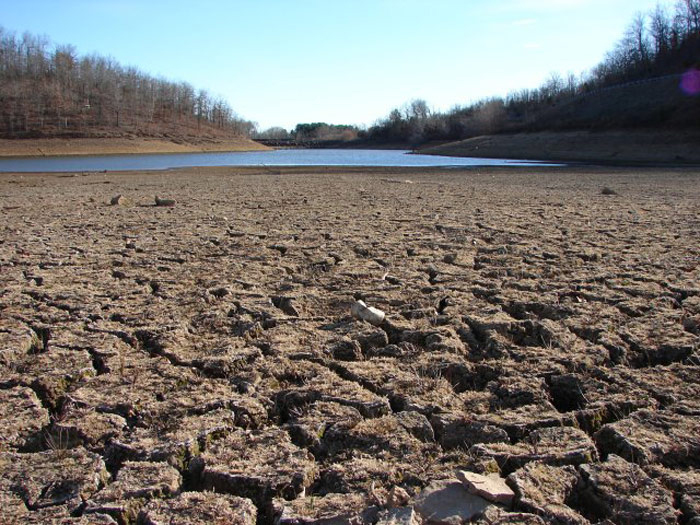
The USDA’s Regional Climate Hubs will help farmers deal with the impacts of climate change, like drought (photo: NOAA)
CURWOOD: How big is the budget for the regional climate hubs?
BARTUSKA: Well, I don’t actually have a firm figure because we’re going to be spending the next few months developing the full plan so we know exactly what the scope will be, but I can tell that the last few years, we’ve been spending approximately $100-$120 million dollars a year on climate change at USDA up to the 13 of the 16 agencies that are doing that work. So we already have made a big investment, and this is a redirection of some of those funds into a much more deliberate information delivery system.
CURWOOD: So, let’s talk about some of the specific issues that the centers will deal with. You talked about risk adaptation and mitigation; those are big words for “on the one hand coping with the situation, on the other hand, reducing emissions”. Let’s talk first about how these centers can reduce emissions.
BARTUSKA: Well, that’s a great opportunity. One thing that we do know is that our forests in the United States sequester about 12-14 percent of the carbon emissions produced. We know through studies that we could double the amount of carbon sequestration through forest management. So that’s one very specific thing we could be focusing on is how do we better use our forests to capture that carbon and to reduce overall carbon load in the atmosphere.
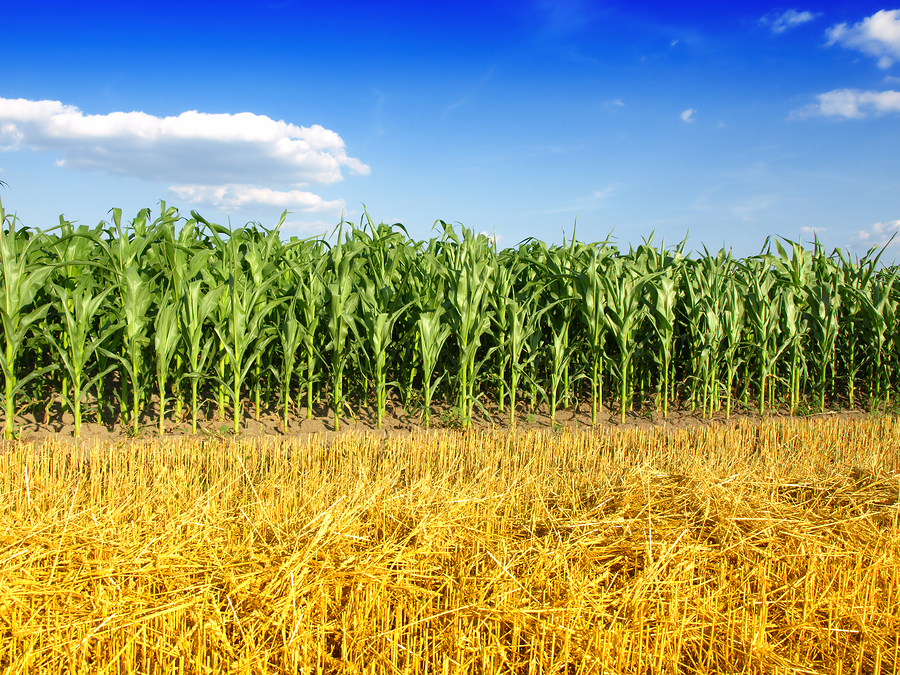
US agriculture is vulnerable to changes in the climate (photo: bigstockphoto.com)
But through our agricultural programs, we see some tremendous opportunity. We’ve been working with the dairy industry to tighten the cycle up in dairy production so that the water cycle is retained in sight, that there’s less methane produced through proper livestock management, and for some agricultural systems, being able to encourage the use of renewable energy as part of their portfolio. And if you look at the total agricultural system, we have a lot of farms in lots of different places, so we see there’s a real measurable opportunity to reduce energy use even as we increase the efficiency of the energy that we do use.
CURWOOD: Tell me how these centers will help farmers and foresters cope with the coming changes in the climate?
BARTUSKA: Well, one of the earliest deliverables we’re expecting from them is to be able to do a periodic regional assessment of risk and vulnerability in the production sector, and this is tied directly to the national climate assessment that is done through the US Global Change Research Program. So being able to do these periodic regional assessments gets us much closer to getting the data and the information that’s needed for the region at hand which has usually very specific questions, and we see it as a really tight coupling between that risk assessment and the needs of farmers and ranchers or foresters in that region.
CURWOOD: Plant or don’t plant?
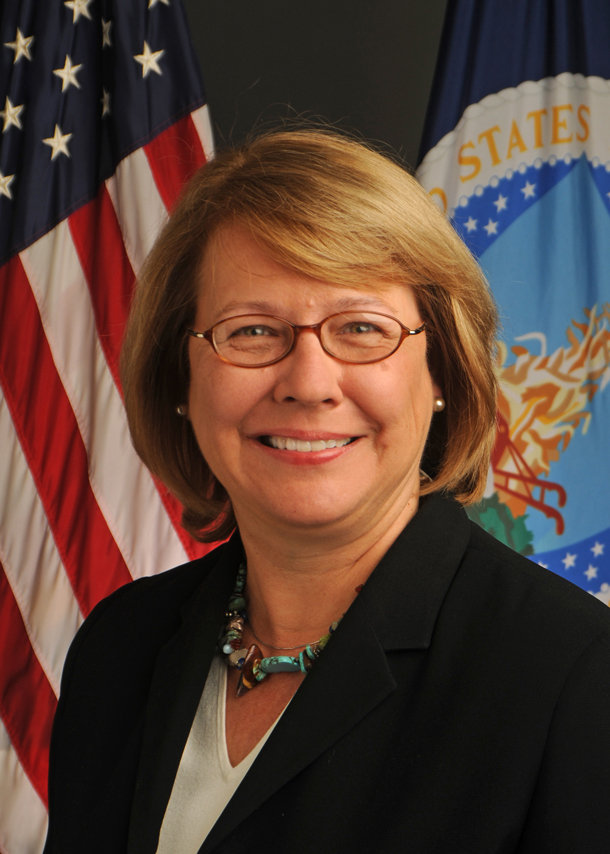
Dr. Ann Bartuska of USDA (photo: USDA)
BARTUSKA: Well, it may be plant or don’t plant. It may be the timing of the planting. It also might be what type of seed do you use to actually get a productive crop. One of the other areas of research that’s been going on is looking at the ability of different seeds or how particular seeds carry a trait to be more drought tolerant, or actually more temperature tolerant and so if we can then couple that knowledge with a rapid movement of, “Alright, we’ve got drought tolerant seeds, it looks like it’s going to be drier this year. This is what you should use in your system. This is where you might want to plant them”, and being able to inform them. Farmers are really good at adapting quickly, because that is their lifeblood, but we need to give them the tools that allow them to do that.
CURWOOD: Ann Bartuska is the Deputy Under Secretary for the USDA’s Research, Education and Economics division. Thanks for joining us.
BARTUSKA: You're welcome. I enjoyed it.
Related links:
- USDA’s Regional Climate Hubs
- Ann Bartuska
[MUSIC: George Duke “Let’s Roll” from Face The Music (Big Piano Music 2002)]
CURWOOD: Coming up...How tiny creatures can help solve the big problems of soil loss and dust storms. Keep listening to Living on Earth.
[CUTAWAY MUSIC: Freddie Hubbard: “Sky Dive” from the CTI Masters Collection (CTI Records 2005)]
Farm Act of 2014 Provides Poor Soil Protection
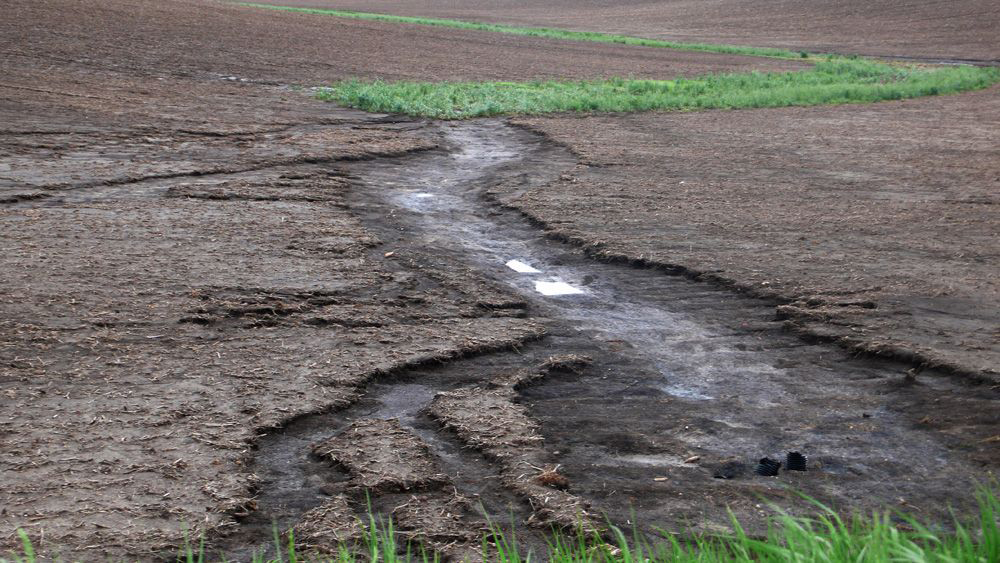
Erosion in Iowa farmland (Copyright © Environmental Working Group, www.ewg.org. Reprinted with permission.)
CURWOOD: It's Living on Earth, I'm Steve Curwood. Every few years Congress rewrites the massive law that covers everything from farm subsidies to food stamps. After years of debate, President Obama recently signed the latest Farm Bill into law. There's relief that it's finally done, but some of the compromises disappointed a number of stakeholders, including Craig Cox. He’s a biologist and the Senior Vice President of Agriculture and Natural Resources at the Environmental Working Group, and joins us now from Ames, Iowa. Welcome to Living on Earth, Craig.
COX: Thank you.
CURWOOD: So, now after a number of years, the Congress and President have enacted a Farm Bill. It’s now a law. It’s, what, a 1,000-page law. So we can’t cover it all, but what do you see are the major changes in this newest version?
COX: The biggest change is that the Congress is moving away from traditional farm subsidies as the way that taxpayers support farm income, and replacing those traditional subsidies with essentially a pumped-up crop insurance program. Getting rid of direct payments has been touted as reform, but they’re using 80 percent of the savings from ending the traditional farm subsidies and using it to create a suite of new subsidy programs that are essentially an add-on to the existing crop insurance program.
CURWOOD: What do these crop insurance incentives do in terms of the impact on our agricultural lands?
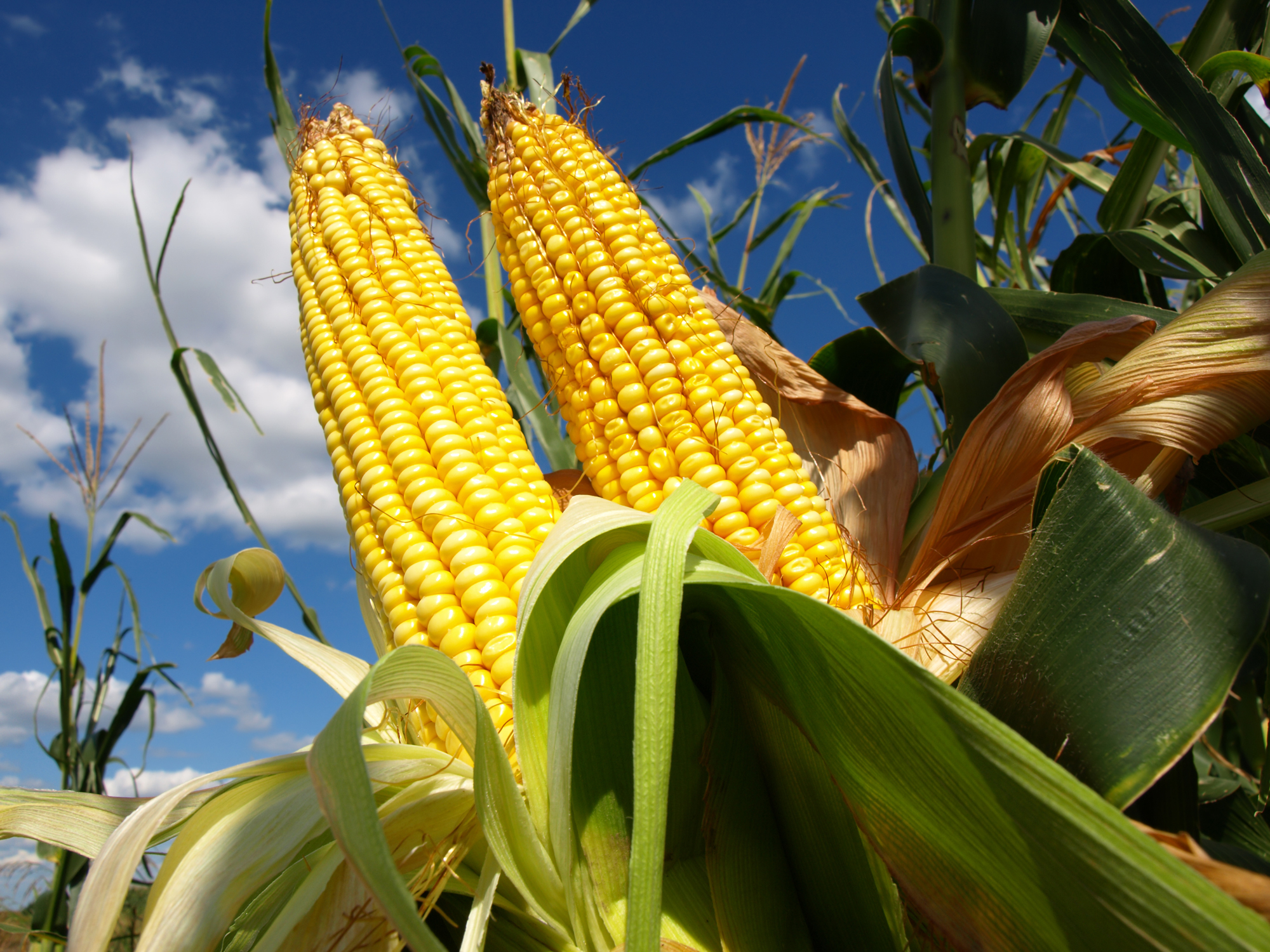
The new Farm Act gets rid of direct payments to farmers, but continues to subsidize production through the cop insurance program (photo: bigstockphoto.com)
COX: That’s one of our major concerns about the direction this Farm Bill is taking. If the taxpayer picks up too much of the inherent natural risk of farming, then obviously you start to encourage farmers to take risks they wouldn’t otherwise take, and some of those risks, like plowing up marginal land that are subjecting to drought or flooding, or increasing the drainage on land they’re already farming, or intensifying and increasing the size of their farms, all of those decisions involve risk. If the taxpayer is going to make sure that that farmer isn’t going to suffer from taking those risks, then why not take them?
CURWOOD: Now, an important part of the farm legislation is the Conservation Reserve Program. Explain that program for us if you would please.
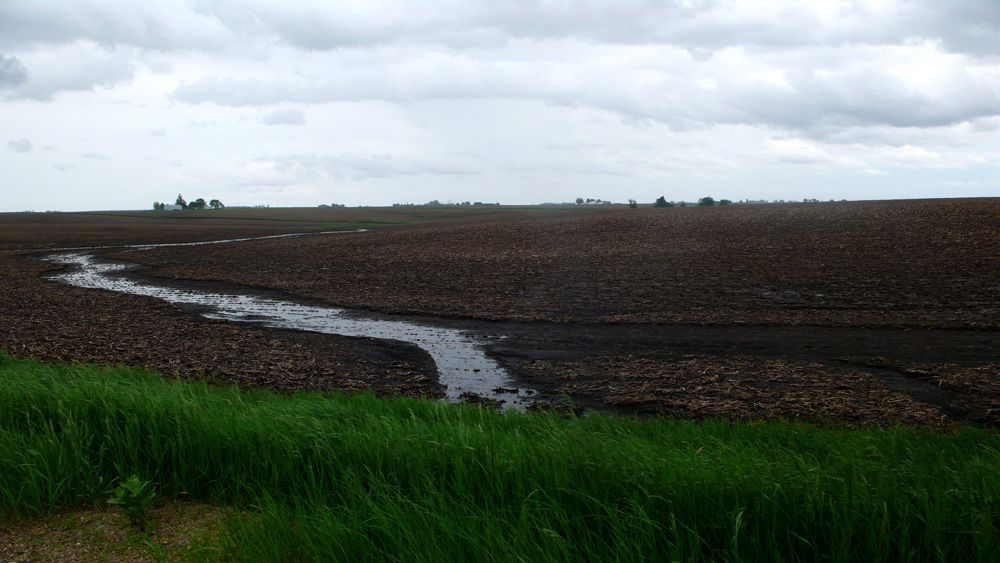
Soil loss is particularly dramatic after big storms, as heavy rain creates gullies in the earth (photo: Copyright © Environmental Working Group, www.ewg.org. Reprinted with permission.)
COX: That’s a program that came into being in 1985. It essentially authorizes the government to rent land in a ten-year rental agreement with landowners, to take that land out of crop production and restore it to wetlands or grasslands or forest.
CURWOOD: And how much land is protected under the Conservation Reserve Program now?
COX: At its peak it was 39 million acres. This Farm Bill is scheduled to reduce that to 24 million acres.
CURWOOD: And in your view, what’s the effect of that reduction?
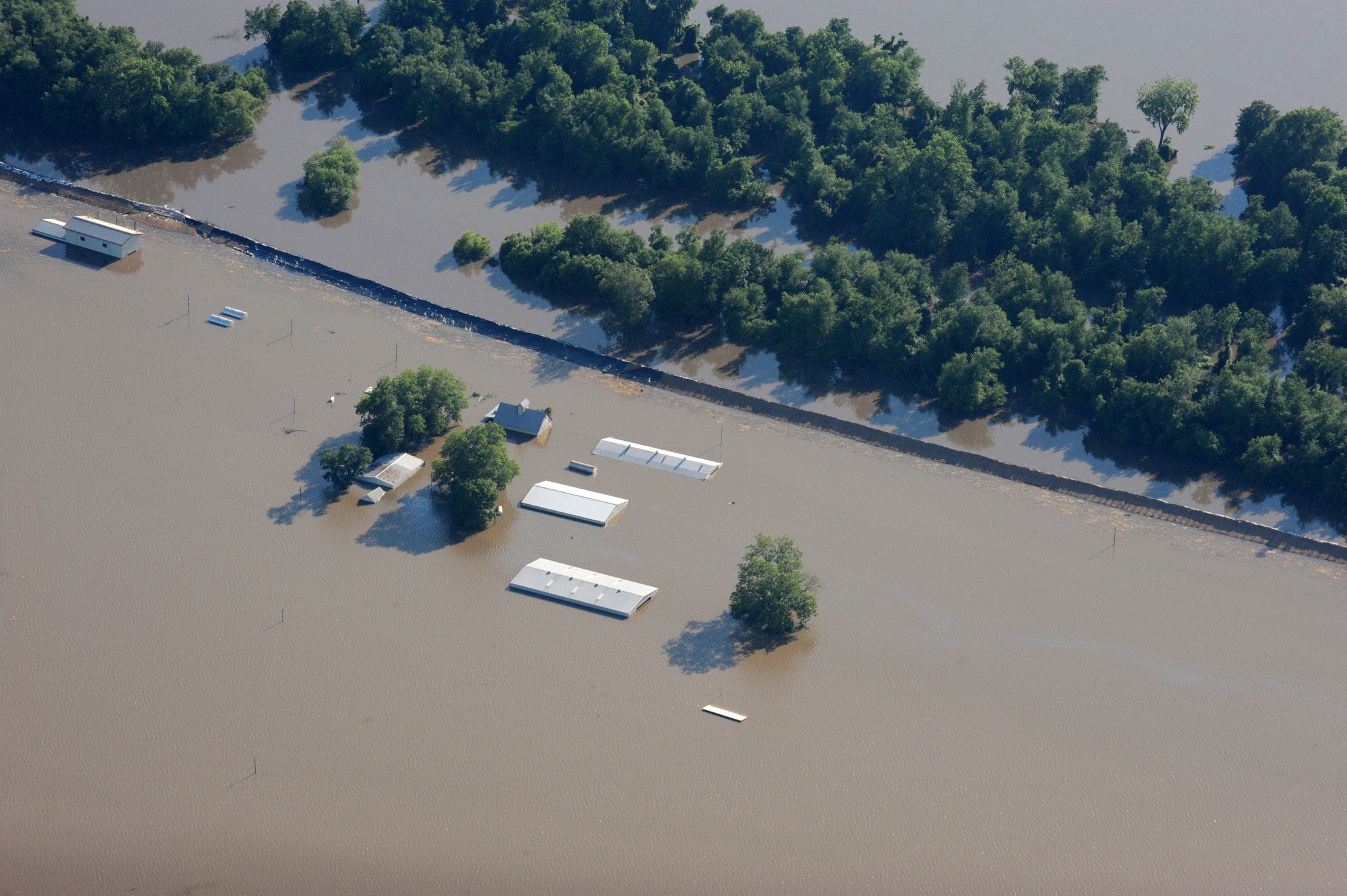
Floodwaters submerge a Missouri farm along the Mississippi River (photo: FEMA)
COX: Well, we’re seeing that effect all over the Corn Belt where I live. We’re seeing highly erodible, very vulnerable land coming back into crop production and when a bad storm hits, it’s suffering catastrophic rates of erosion that contribute to pollution of streams and rivers that’s already unacceptable.
CURWOOD: What is the extent of soil loss in the Midwest?
COX: The official estimates that we get from USDA are only statewide averages. So, let’s say my state of Iowa, they report that the statewide average is about five tons per acre of soil loss, which should make you feel somewhat good about rates of erosion. But if you look really more closely than that statewide average, as scientists at the Iowa State University have done, what you find out is that statewide erosion is masking really catastrophic rates of erosion that are occurring when a severe storm hits a poorly protected or vulnerable cropland. And we went out and looked at what happened to cropland after a heavy storm in 2013 in central Iowa, and we found out that 1.2 million acres of farmland may have lost more topsoil in just five days than what is supposed to be lost over an entire year. And in fact, according to the Iowa State scientists, in 16 square miles, the most vulnerable or poorly protected fields may have lost as much as 40 tons of soil per acre in just that five-day period.

Agricultural erosion in Craig Cox’s home state of Iowa (photo: (Copyright © Environmental Working Group, www.ewg.org. Reprinted with permission.)
CURWOOD: And by the way, the soil in Iowa is, well, special, right?
COX: It’s amazing. It’s incredible soil. It’s the backbone of crop production in the Midwest, which is why this topsoil should be so carefully managed and protected.
CURWOOD: So, with all this soil loss, what impact does the changing climate have on that?
COX: Well, it makes things much more dangerous. These extreme events, the heavy rainfall, really accelerates the rate of erosion and polluted runoff from agricultural fields. And unfortunately, this more dangerous weather is happening as our soil and our farmland is less protected. In response to the high commodity prices...you know as I mentioned marginal land is being brought into production and really shouldn’t be in row crops, farmers are pushing the land hard to try to get every bushel they can out of every square foot of cropland, and as a result, a lot of the conservation practices that would protect that land are leaving the landscape. So at the same time the weather’s becoming more dangerous, the land is becoming more vulnerable, and the combination of those two things is really creating a creeping ecological disaster in the Corn Belt.

Craig Cox (photo: Environmental Working Group)
CURWOOD: That's Craig Cox of the Environmental Working Group speaking to us from Ames Iowa.
Related links:
- Library of Congress Summary of the 2014 Agriculture Act
- Read Wash Out the Environmental Working Group’s report on soil loss in Iowa
- Check out more from Craig Cox
- Follow him on Twitter
Using Bacteria to Heal the Desert
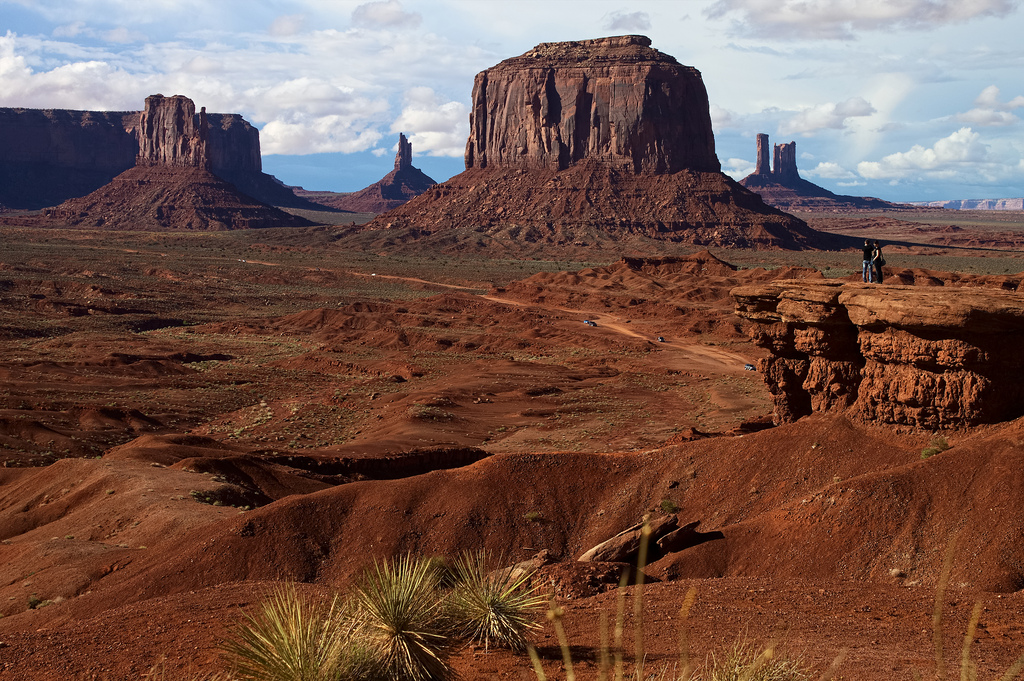
Desert (Photo: Project 1080, flickr, Creative Commons)
CURWOOD: Well, while the recently passed farm legislation may promote certain farming practices that worsen soil loss, scientists are working on new approaches to help preserve soils. One of them is Matthew Bowker, who teaches at the Northern Arizona University School of Forestry. He studies how damaged soil crusts might be restored. He sees much of the soil loss out in the desert west as the direct result of recent weather events and land use changes.
BOWKER: For the last 15 years or so, we've seen out in the west an awful lot more dry years than wet years, also pretty warm temperatures, and that in conjunction with land use impacts that people have out on the landscape, we’re seeing increasing emissions of dust in the air. So the dry west is becoming a dustier place.
CURWOOD: Now how does this loss of soil affect the environment in the long run?
BOWKER: Not only are you losing soil that took a very long time to develop and accumulate, some of the dust from the deserts in the southwest finds its way up to the snowpack in the Rockies and the San Juan Mountains. It’s darker than snow, so it speeds up the timing of snowmelt, in such a way that some of the snow is lost straight back to the atmosphere, and it increases the snow-free period so that plants are up and running earlier and consuming water up into the mountains earlier because of this dust from the desert. And when that happens there’s less snowmelt runoff going into the rivers, and this affect is sizable. This is decreasing the snowmelt flow to the Colorado River by about five percent.
CURWOOD: So what are you doing to address this? Talk to us about your research.
BOWKER: Well, I am seeking to rebuild the living skin of the Earth. I study a not-very-well-known desert community of organisms called biological soil crusts, and what these are...it’s a sort of an amalgam of cyanobacteria which you may be familiar with as blue-green algae, and also mosses and lichens. And they grow just sort of in a thin veneer on the desert soil surface. They’re common in deserts throughout the world. But the thing with these guys is they are very easily lost due to physical disturbances, things like livestock hooves or vehicle tracks or human footprints, and they don’t come back very fast. So, a lot of my research is focused on finding ways and building a technology to rebuild these soil crusts.
CURWOOD: How do you do that?
BOWKER: Well, some of these organisms you can grow in the laboratory. The idea is once you learn how to cultivate these guys really well, and cultivate the right ones, you then need another technology to sort of deploy them back out into the environment in such a way that they become established. The technology does not really exist yet to do it on a really big scale, with the exception of some fascinating stuff they’ve done in China where they’ve actually used straw to stabilize sand dunes, and once they create the stability, they have just naturally been able to just naturally grow back both plants and these biological soil crusts. It still takes a while. It takes a couple of decades to get a strong biological crust going, but it’s an awful lot faster than recovery on a mobile dune which you know, you could sit around waiting for hundreds of years.
CURWOOD: So let’s fast-forward and say you, in fact, find a way to reproduce and then distribute this stuff on the soil. Where do you think this approach would be most useful in the US?
BOWKER: All the livestock in the west are creating issues with the trampling due to their hoof action and the impacts they have on these crusts. So I think what you could do is in a place that has been impacted by too much grazing, you could use this technology to sort of heal that area, and I think the other area would be in finding dust emission hot spots. Dust is kind of a hot spot driven thing, there’s a little bit of dust coming from the entire west, but there’s an awful lot of dust coming from a handful of places. So, a technology like this could maybe be strategically deployed in places that we identify that are emitting an awful lot of dust.
CURWOOD: Where are some of those dust hot spots right now?
BOWKER: There’s one south of Phoenix. There’s a big area of some used, some abandoned cropland. Just east of Flagstaff there’s a big area that blows dust straight to the San Juan Mountains. It’s kind of a triple whammy of naturally erodible soils, some land use impacts, and our drought conditions. That’s why it’s blowing a lot lately.
CURWOOD: So that dust hotspot near Phoenix...we see that on television from time to time, when a cloud just makes the city disappear.
BOWKER: Yes, in fact, the Arabic word for “haboob” is a word for dust storms that is now part of the lexicon in Phoenix. People know that word know now because they’re getting used to these storms that slowly roll in that are thousands of feet high.
CURWOOD: So overall, what do you think is the potential to use these organisms to heal the soil? To what extent could you solve erosion problems on a large scale?
BOWKER: That’s yet to be seen, but I think the potential is great. You know, if we solve all these technical problems and put in the research and development, we could really have the solution to these issues. You know, before, we’d usually try to attack more problems like this by trying to get more vegetation to grow, and adding a bunch of seed to the environment, but that ends up being a very expensive practice that really does not work well at all. Basically we need something that works better, and will continue to work better as our climate keeps getting warmer and possibly dryer.
CURWOOD: Matthew Bowker is an ecologist at Northern Arizona University. Thank you so much for taking the time today, Matt.
BOWKER: Thank you very much. It was a pleasure.
Related links:
- Check out Mathew Bowker’s article describing his work
- Mathew Bowker’s page at Northern Arizona
[BIRD NOTE® THEME]
BirdNote© How Feathers Insulate
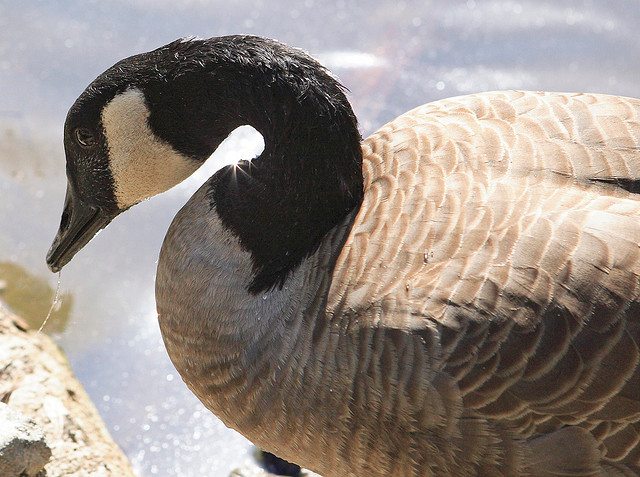
Goose Feather (photo: Patty Pahz)
CURWOOD: Now in much of the US, we've been enduring some ferociously frigid weather, the kind that makes you want to snuggle down under your nice down comforter and say, "wake me up in May!" You might pity poor creatures that live outside in this cold, but as Michael Stein explains in today's BirdNote, some of them are very well protected.
[CANADA GOOSE HONKING, AND SOUNDS OF WATER]
STEIN: Imagine this Canada Goose paddling along on a cold winter day. Can you guess how many feathers cover this goose? Hundreds? Thousands?
[MORE HONKING]

Canada Goose (photo: Esther Simpson)
A single Canada Goose has between 20 and 25 thousand feathers. A smaller bird like a sparrow or wren might have 7 to 10 thousand. Those feathers are uniquely designed to help the bird fly, shed water, or display distinctive markings. A great many feathers are the short, fluffy kind, the down, whose purpose is to insulate the bird from the cold.
Birds survive in sub-zero weather by fluffing their feathers, creating layers of air and feathers. Just a fraction of an inch of this insulation can keep a bird’s body temperature at 104 degrees, even in freezing weather.

Goose Feather (photo: Patty Pahz)
People learned years ago how well goose-down insulates and began stuffing comforters, sleeping bags, and clothing with it. More recently, we’ve developed artificial substitutes, but geese and other birds continue to get along just fine with the original material.
[MORE CANADA GOOSE HONKING]

Close up on Canada Goose feathers (photo: David Levinson)
January is a good time to begin a new volunteer activity, and Audubon chapters can help you find your niche. After all, “nicher” in French means to nest.
Written by Frances Wood
Bird sounds provided by The Macaulay Library of Natural Sounds at the Cornell Lab of Ornithology, Ithaca, New York. Calls of the Canada Goose [3585] recorded by G.B. Renyard.
Winter wind Nature SFX Essentials #02 recorded by Gordon Hempton of QuietPlanet.com.
BirdNote’s theme music was composed and played by Nancy Rumbel and John Kessler.
Producer: John Kessler
Executive Producer: Chris Peterson
© 2014 Tune In to Nature.org January 2014 Narrator: Michael Stein
CURWOOD: You can find pictures at our website, LOE.org.
[MUSIC: Quantic “The Goose On My Grave” from Pushin On (Ubiquity Records 2005)]
CURWOOD: Coming up. The prospects for protecting more wild and scenic federal lands. That's just ahead on Living on Earth. Stay tuned.
[CUTAWAY MUSIC: Tommy McCook “Blazing Horns (Extended Mix) from Blazing Horns/Tenor In Roots (Blood And Fire Records)]
ANNOUNCER: Funding for Living on Earth comes from the Grantham Foundation for the protection of the environment. Supporting strategic communications and collaboration in solving the world’s most pressing environmental problems. The Gordon and Betty Moore Foundation. The Kendeda Fund, furthering the values that contribute to a healthy planet, and Gilman Ordway for coverage of conservation and environmental change. This is PRI, Public Radio International.
Beyond the Headlines
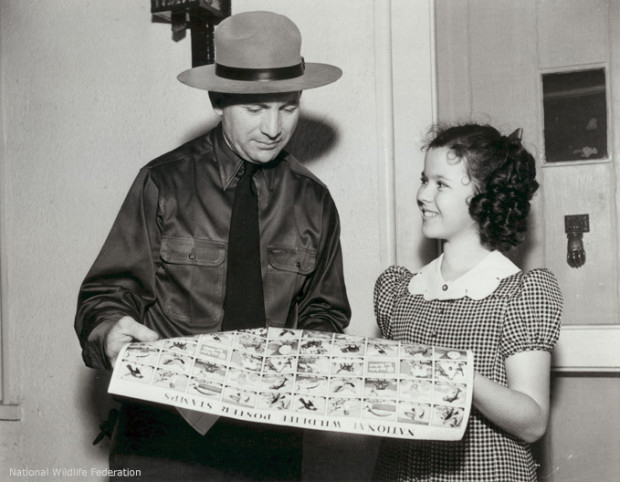
Shirley Temple was a spokesperson for the National Wildlife Foundation. (National Wildlife Foundation)
CURWOOD: It's Living on Earth, I'm Steve Curwood. Time for us to take a trip beyond the headlines with Peter Dykstra. He's editor of the Daily Climate.org and Environmental Health News, that's EHN.org, and joins us on the line now from Conyers, Georgia. Hi, Peter.
DYKSTRA: Hi, there Steve.
CURWOOD: So what did you find this week?
DYKSTRA: Well, we’re going to start out on a little bit of a different footing this week. You know, there have been a lot of leakers, information leakers in the news the past couple of years, Julian Assange, Chelsea Manning, Edward Snowden. Whatever you think of them, they’ve certainly brought a lot of information to light that the world wouldn’t otherwise know. And now there’s a constructive copycat effort in the UK. There’s a WikiLeaks-style site that’s been launched WildLeaks. Their goal is to uncover environmental crimes like poaching and illegal logging. They’re hoping to serve as kind of a hub for whistleblowers to help rein in wildlife crime.
CURWOOD: This is a little different from Assange and Snowden and company. The WildLeaks folks don’t seem likely to get accused of espionage, are they - at least, so long as they stay in the UK?
DYKSTRA: Well, as long as they stay in the UK, it might be more dangerous in the places where there’s a lot of money to be made from poaching. It’s a huge industry. There’s no controversy about how bad it is elsewhere - poaching, illegal logging. Wildlife crime is immense; it’s worth $17 billion a year around the world. That makes it the fourth most lucrative type of crime on Earth, behind narcotics, counterfeiting, and human trafficking.
CURWOOD: So WikiLeaks for forests and wildlife; what else you do have out there this week?
DYKSTRA: Well, here’s something you probably didn’t know about one of America’s biggest conservation groups in the US, the National Wildlife Federation. NWF was founded in the 1930’s; it’s always been the meeting point between hunters and conservationists, this group of rugged outdoorsmen. So you want to guess who the first big celebrity Hollywood spokesperson was for this group?
CURWOOD: From that era, I guess you’re going to suggest a man’s man, John Wayne or Gary Cooper.
DYKSTRA: No, how about Shirley Temple? America’s sweetheart back in the Depression. When she was 11-years-old, she was the honorary chair of Wildlife Week for the National Wildlife Federation. We saw a lot of tributes this past week to the late Shirley Temple Black. We were reminded that she went from being a child star to having a grown-up career as a diplomat. But she also, when she was a grown-up, served on the National Wildlife Federation Board back in the 1970’s.
CURWOOD: Shirley Temple, with all those curls, a tree-hugger. Anything else out there?
DYKSTRA: Yes, about a month ago, you and I talked about Cheerios committing to using non-GMO ingredients, maybe not that big a deal since there’s no such thing as genetically modified oats, but there are three more iconic American foods out there making big changes. The first one is Kraft Singles American Cheese. They’re taking out artificial preservatives from the cheese. Kraft singles are technically a “cheese product,” and each slice is still probably come in its own little plastic sleeping bag, but it won’t have preservatives any more.
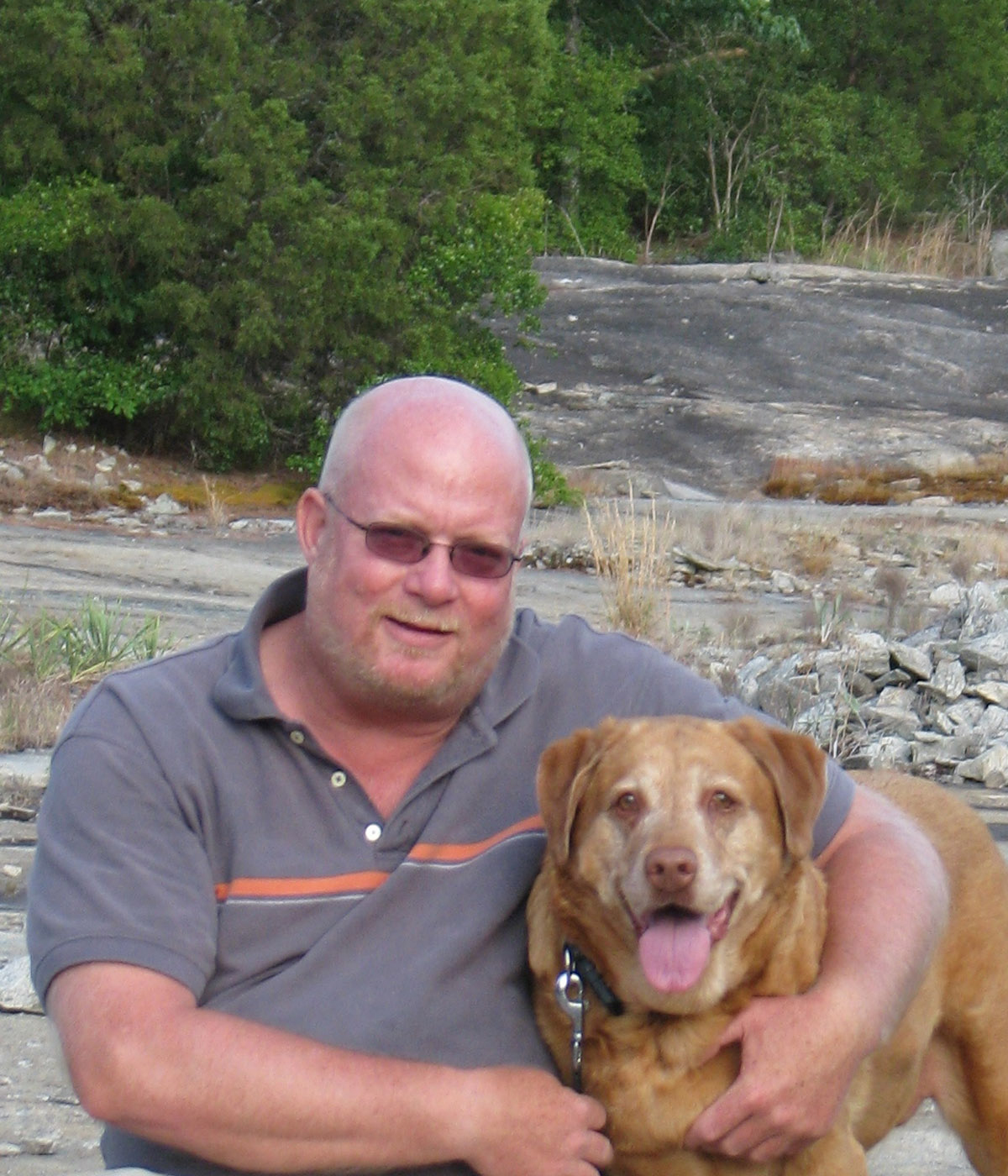
Peter Dykstra is publisher of the Daily Climate and Environmental Health News. (Peter Dykstra)
The second one: M&M’s. It’s been two decades since M&M’s broke their own color barrier – they introduced blue M&Ms. You might remember that George Carlin gave us a warning about this, he said there’s no such thing as blue food. And in fact that dye in blue M&Ms is a synthetic dye, but the M&M’s manufacturer says it’s working on an algae-based dye to bring in the real stuff rather than synthetics.
CURWOOD: OK, Peter, you said three, so what more?
DYKSTRA: Well, here’s the final one. Big down here in the south, there are 1,700 Chick Fil-A fast food restaurants. Chick Fil-A says they’re on a five-year schedule to go to antibiotic-free chicken with all their chicken.
CURWOOD: Wow. Well, what about corn dogs getting healthier? Any word on that?
DYKSTRA: No news there. You and I have known each other for a while. I don’t have the best diet in the world, but I am proud to say that I have avoided corn dogs for half a century. If you want a word for corn dogs, I’m afraid it’s one I can’t use on the radio.
CURWOOD: Well, we better to move right onto the calendar. What do you have for us this week?
DYKSTRA: How about a little happy birthday shout-out? A 155th birthday for Professor Svante Arrhenius. And why should we care about him? Svante Arrhenius was a Swedish chemist and physicist and back in 1896 – you go back to when Grover Cleveland was the President of the United States – Svante Arrhenius published a global warming paper, peer-reviewed paper that said that coal-burning was probably going to lead to a future threat to warm the earth. Svante Arrhenius, happy 155th birthday. He’s one of our greatest I-told-you-so scientists.
CURWOOD: Happy birthday to you, Svante Arrhenius! And thank you to you, Peter Dykstra, publisher of EnvironmentalHealthNews.org and the DailyClimate.org. Talk to you soon, Peter.
DYKSTRA: Talk to you soon, Steve. Thanks a lot.
Related links:
- Environmental Health News
- Daily Climate
- Follow Peter Dykstra on Twitter
[MUSIC: Roots Tonic: Employees Must Wash Your Hands” from Bill Laswell Meets Roots Tonic (ROIR Music 2006)]
Presidential Pen Creating National Monuments

The Boulder White Clouds in Idaho (Jess Johnson)
CURWOOD: President Obama recently promised to use his executive authority to take action when Congress is stuck, and one of his most powerful prerogatives relies on the 1906 Antiquities Act. That law allows the president to declare almost any federal land a protected national monument. Last year President Obama designated five new national monuments, including Rio Grande del Norte in New Mexico and the San Juan Islands in Washington State. Now conservationists are lobbying the White House for more. Here's Ryan Bidwell, National Monument Campaign Director for the Conservation Lands Foundation. Welcome to Living on Earth.
BIDWELL: Thank you very much for having me.
CURWOOD: So what does it mean for a piece of land exactly to be designated as a National Monument? What kind of additional protection does that offer?
BIDWELL: In general, these are areas that would be set aside from oil and gas development, mining...set aside so they wouldn’t be traded or sold off into private lands. But beyond that, management of a National Monument is really conducted in a way that accommodates the individual values of the land, and incorporates public input so people get to be part of the process.
CURWOOD: Now I believe that President Obama has set aside some nine National Monuments so far, ranging from territories to buildings. What’s the process like under President Obama to get one of these named?
BIDWELL: The administration has been very clear from the beginning that it wants to go about creating new National Monuments in an open and transparent way. So we’ve seen, as you said, nine new National Monuments established to date. In all instances, these were long-term campaigns to protect important places, whether they were historic sights like the Harriet Tubman Underground Railroad National Monument, or large landscapes like the Rio Grande Del Norte in New Mexico. All of them had local community efforts, most efforts had legislation in Congress that had failed to move, and ultimately those community groups petitioned the Obama administration to get more involved, and ultimately to create a National Monument in their area.
CURWOOD: So this is different from other presidents. So far Mr. Obama has not on his own just initiative said, “Hey, this place is so special we need to preserve it. Here’s my pen.”
BIDWELL: Quite the contrary. The administration has listened hard to people on the ground, in particular to members of Congress who have often asked the administration to get more involved. Unfortunately, we’re dealing with a historically anti-conservation Congress. For many, many years, protecting our historic sites, our natural areas was a very bi-partisan tradition. These days, we’re in the midst of a five-year drought of any conservation bills moving through Congress, the first time we’ve seen that since WWII. So it’s no surprise in my mind, that members of Congress and local communities are turning to the White House to ask them to move forward with conservation for areas that they hold dear.

The Rio Grande Del Norte is a recent addition to the US National Monuments. (BLM New Mexico)
CURWOOD: Now, I know these things can fall along party lines, but I understand that there’s an initiative to protect the Boulder-White Clouds in Idaho, which is pretty much a Republican delegation there.
BIDWELL: Yes, Congressman Mike Simpson has been the primary champion of the Boulder-White Clouds for more than a decade. The congressman, as you might imagine, as a Republican is not strongly in favor of President Obama declaring the Boulder-White Clouds a National Monument, and I think would much prefer to see his legislation move. But unfortunately that legislation hasn’t succeeded. So as is the case in other places, the local community there has started a conversation about a National Monument as different way to accomplish the same objectives.
The Boulder-White Clouds are a truly unique landscape - high mountain peaks with snow and ice, old growth forests. It’s one of the largest, roadless landscapes in the lower 48 that doesn’t have any permanent protection. It’s also home to the highest elevation runs of Pacific salmon in the United States, as well as just incredible access for recreation, for hiking, fishing and mountain biking, etc.
CURWOOD: What are the top two or three or four places on your list that you think likely could or would become National Monuments before President Obama leaves office?
BIDWELL: Two places that we’re working on right now that I think have great opportunity are the Oregon Mountains Desert Peaks in southern New Mexico where Secretary of Interior Sally Jewell was just visiting with the local community a few weeks ago, and heard directly from the community about their support for a National Monument. Another area is the Stornetta Public Lands in Mendocino County, California, an area the local community is asking to have added to the California Coastal National Monument that was established originally by President Clinton. That area also saw a visit from the Secretary back in November.

The San Juan Islands in Washington State were designated a National Monument by President Obama in 2013. (Patrick McNally)
CURWOOD: Ryan, tell me, how much does it cost to create a new National Monument?
BIDWELL: Given that the President can create a new National Monument with the stroke of a pen, by signing a Presidential proclamation, there’s really no direct cost in the short term for creating a National Monument. After monuments are established, a new management plan is developed with the public involved that decides how the monument is taken care of, whether there’s a need for a visitor’s center, a campground, trails or other visitor’s services, and it’s really through that process that it’s determined exactly how an area will be taken care of, and whether or not there’s a need for new resources to make the area accessible to the public. Ultimately, it’s up to Congress to establish the budget, and it’s that budget that guides what resources the Park Service and the BLM and the Forest Service has available to take care of these kinds of places.
CURWOOD: Why do you think it’s important for the President to use the Antiquities Act to protect federal lands in this way?
BIDWELL: It’s really a great American tradition. It’s been called one of our greatest ideas as a nation. And I believe personally, and I think all the communities that we’ve worked with around the country would strongly agree, that that legacy is not complete. We have a great opportunity to continue to expand the diversity of sites that are protected in this nation, and continue to make sure that we have a system that works for all Americans in all places.
CURWOOD: Ryan Bidwell is the National Monument Campaign Director for the Conservation Lands Foundation that’s based in Durango, Colorado. Thanks so much, Ryan, for taking the time today.
BIDWELL: Absolutely. Thank you very much.
Related links:
- US National Monuments
- Wilderness Society’s Explanation of the Antiquities Act of 1906
Snowshoeing with Sally Jewell
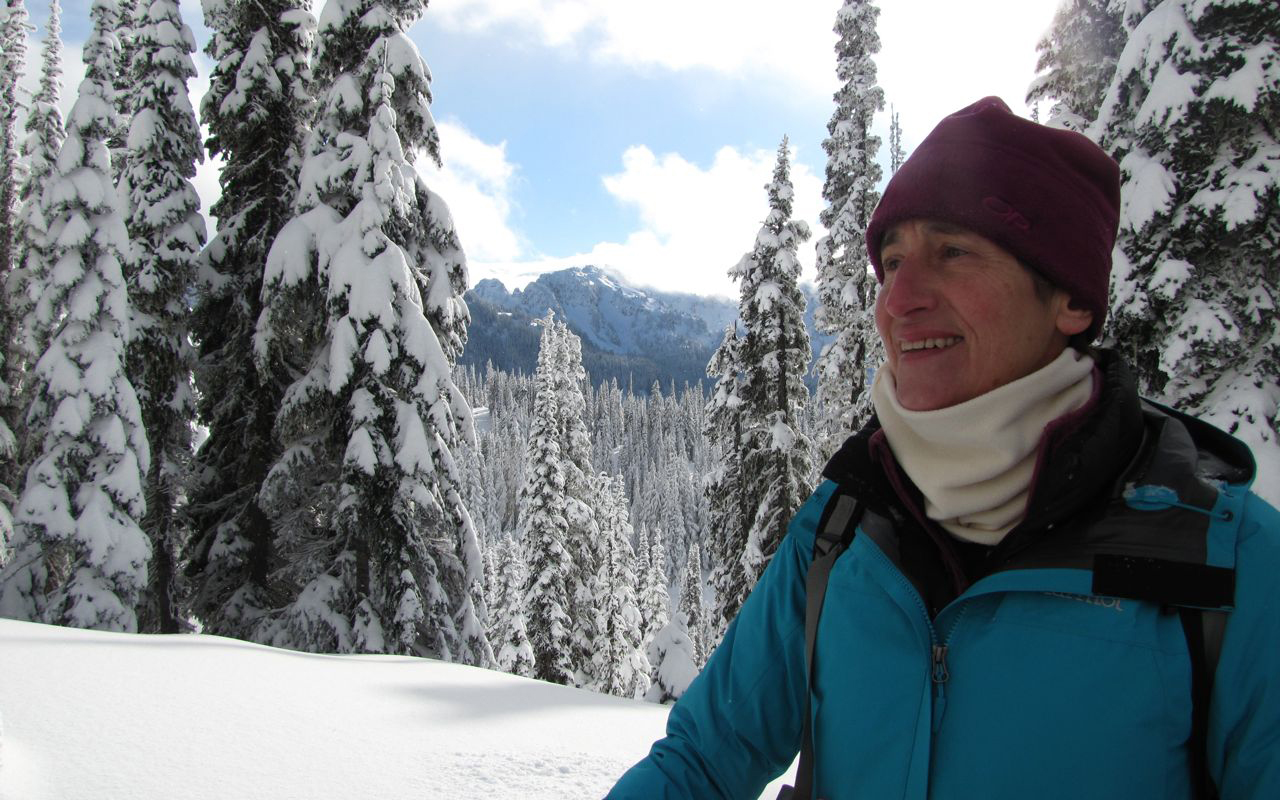
Sally Jewell in her natural habitat (photo: Ashley Ahearn, EarthFix)
CURWOOD: Sally Jewell, one-time CEO of outdoor gear company REI, is now Interior Secretary, and she will undoubtedly be part of any discussions of new National Monuments. She’s not talking about those options publicly, but she has been meeting with government scientists to discuss the impacts of climate change and visiting some of our protected lands, including Mount Rainier National Park. And while she was there she did some snowshoeing with Ashley Ahearn, of the public media collaborative EarthFix.
JEWELL: Alright Ashley, retire the microphone, it's time to suit up.
AHEARN: So how many times have you done this hike, Secretary?
[SOUNDS OF SNOWSHOEING]

Secretary of the Interior Sally Jewell listens as Paul Kennard of the National Park Service, talks about the Nisqually floods of 2006. (Photo: Ashley Ahearn, EarthFix)
JEWELL: This particular hike? I don't think I've ever done this hike, at least not on snowshoes.
AHEARN: You come up here and go straight to the top.
JEWELL: Well I've done that a few times. I've wandered all around here with my kids. It's so different in the wintertime.
AHEARN: What's the hardest part of your job?
JEWELL: You know Ashley there were times when I thought running REI was difficult. It was so easy compared to this job.
AHEARN: How so?

Nisqually Valley (photo: Ashley Ahearn, EarthFix)
JEWELL: The fact that every decision we make is a conflict of some sort. You're going to make somebody mad, maybe somebody happy. You have to pay attention to the facts and just do the best job you can with the best science available and it's complicated. I mean, Indian tribes, water, Fish and Wildlife, energy development, obviously national parks at a time when budgets are tight. Everything at a time when budgets are tight is just making a lot of really difficult choices.
And we're dealing with a very large board of directors, 535 members.
AHEARN: That don't agree on much.
JEWELL: It's just more complicated than a 12-member board of directors. I think I’ll stop there. In the federal government you're not always rewarded for taking risks. In fact, it's about the opposite from the private sector. So sometimes people take risks and they get accused of wasting money but what I've seen here is good creativity that's trying to make these landscapes more resilient in the face of increasing challenges and it's places like this that help us understand what's happening in the ecosystems because you do have long term science and long term monitoring and people that are out here that are paying attention to even small changes in the ecosystem and the habitat.
AHEARN: It's interesting just within your department the world forces around climate change are almost being wrestled out. The Department of the Interior issues the leases to mine coal and other fossil fuels that are the root, a big part of the problem if you ask the climate scientists in terms of contributions to global greenhouse gas emissions. We're here looking at the symptoms today and you're issuing the permits for the cause at DOI. What do you think about the connection there?
JEWELL: Well the President has made clear that you can't switch from a fossil fuel based economy to a renewable energy based economy over night but we can all conserve starting now and many people are conserving and we have been supporting grants for example, in water conservation and so on. We've also been issuing permits for renewable energy projects on public lands but you can't just snap your fingers and go out of a fossil fuel economy over night so it is understanding that but also standing up other forms of energy.
AHEARN: Everyone that's worrying about climate change is asking for a price on carbon. Is that a pipe dream at this point from what you're hearing in Washington, DC?
JEWELL: I think if the public believes that a price on carbon is a way to address climate change then they should be making that clear to their elected officials. This is the sort of thing that's done by Congress. It's not a thing that can be done through the executive branch so if people feel strongly about that they should make their voices heard with their elected leaders.
AHEARN: What does the President say to you when you get to talk to him about this stuff. What's he like, what's going through his head on this stuff?
JEWELL: The President is very committed to making a difference in his administration and climate change is one area where we really have to look to the future and look to the kind of planet we're leaving to our kids and our grand children. He has been quite forceful in his climate action speech and again in the State of the Union and in meetings that he's had with members of his cabinet, including me, wanting to know what we hear about from the scientists that we have out on the ground, what can be done, how can he be helpful to us, and he's looking for answers from people like the people we've met here on Mount Rainier, who've got great answers, who have been working on developing a more resilient infrastructure, who have been paying attention to what's been happening on the resources and the President is asking us to channel those great energies up through him so that he can help use his executive powers, where they’re appropriate, to make a difference.
CURWOOD: That’s Interior Secretary Sally Jewell, snowshoeing on Mount Rainier with intrepid EarthFix reporter Ashley Ahearn.
Related link:
Check out this story on the EarthFix website
[MUSIC: Bill Frisell “The Big Shoe” from Good Dog, Happy Man (Nonesuch Records 2000)]
This Lake Can Sing!
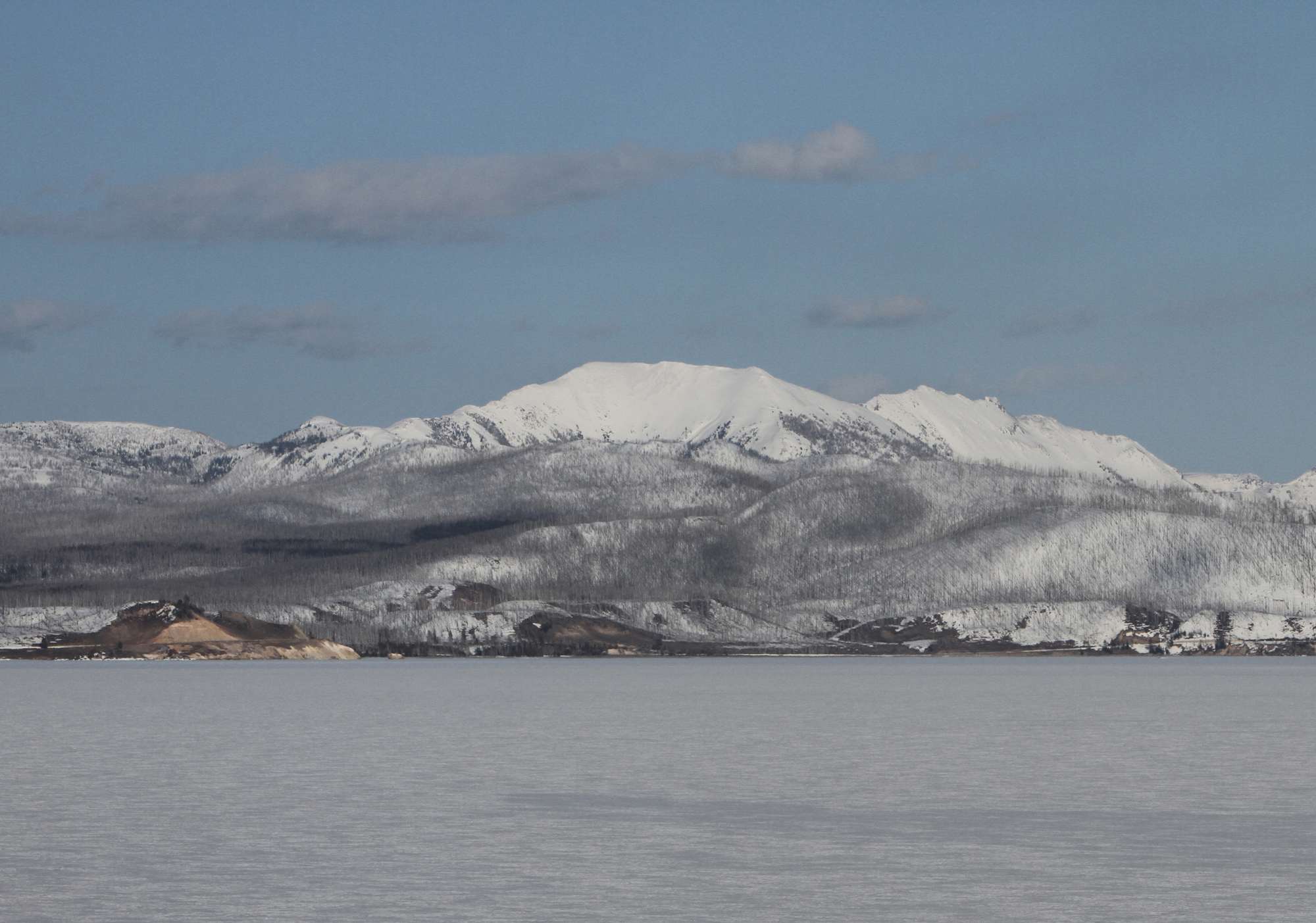
Yellowstone Lake half frozen over (photo: 21708aud, Flickr, Creative Commons 2.0)
CURWOOD: Well, we visit another national park now - the oldest, and among the most iconic - Yellowstone, established by President Ulysses S. Grant back in 1872. The park covers nearly 3,500 square miles, and contains one of the largest high altitude lakes in North America, Yellowstone Lake. It's that lake we're headed for, as it's been the scene of a mystery to visitors for over a century.
In the winter the lake sings, though exactly why is uncertain. Scientists think it's caused by the ice expanding as it freezes. Some say it sounds like a vast pipe organ or the humming of a swarm of bees or the ringing of telegraph wires. Reporter Jennifer Jerrett got the chance to visit the lake with a guide who knows the place well.
SEFTON: I’m Bruce Sefton; I’m with the Maintenance Division, National Park Service, here in the Lake District. This is my 26th winter; every day’s fun.

The singing lake of Yellowstone National Park (photo: Yellowstone NPS)
[WALKING ON SNOW]
We’re going to take you down to listen to the lake sing. Come on down!
[WALKING ON SNOW; SOUNDS OF LAKE RUMBLING, WIND]
Yeah, this doesn’t happen all the time; it’s fairly rare. So not many people hear this, ’cause if there’s even the tiniest bit of snow, the deal’s off, the sound’s all muffled.
[EERIE LAKE SOUNDS]
As this stuff freezes and tightens, there’s movement underneath, so this crackle starts and the crack just goes, takes off.

Yellowstone Lake in winter (photo: Kyle Bradley, Creative Commons 3.0)
[LOUD RUMBLING SOUNDS]
And you’ll hear this thing that’ll sound just like an F16 just coming right at you.
[CONTINUED RUMBLING]
When the sun comes up it begins in earnest, when the sun goes down, it peters out. The activity’ll subside and stop, and be quiet.
[SOUND CONTINUES]

Bruce Sefton at Yellowstone National Park (photo: Jenny Jerrett)
I’ve tried singing along but it just doesn’t work too well.
[SOUND CONTINUES]
CURWOOD: That's Yellowstone National Park worker, Bruce Sefton who took reporter Jennifer Jerrett to the park's singing lake.

Jenny Jerrett (photo: Neal Herbert)
[MORE EERIE SOUNDS]
CURWOOD: Living on Earth is produced by the World Media Foundation. Naomi Arenberg, Clairissa Baker, Bobby Bascomb, Emmett Fitzgerald, Helen Palmer, Catalina Pire-Schmidt, Adelaide Chen, James Curwood, Jennifer Marquis and Gabriela Romanow all help to make our show. Jeff Turton is our technical director. Alison Lirish Dean composed our themes. You can find us anytime at LOE.org, and like us on our Facebook page - it’s PRI’s Living on Earth. And we tweet from @LivingOnEarth. I'm Steve Curwood. Thanks for listening.
ANNOUNCER 1: Funding for Living on Earth comes from the Grantham Foundation for the protection of the environment. Supporting strategic communications and collaboration in solving the world’s most pressing environmental problems. The Kendeda Fund, furthering the values that contribute to a healthy planet, and Gilman Ordway for coverage of conservation and environmental change. Living on Earth is also supported by a friend of Red Tomato, supplier of righteous fruits and vegetables from northeast family farms. www.redtomato.org. This is PRI, Public Radio International.
ANNOUNCER 2: PRI, Public Radio International.
Living on Earth wants to hear from you!
Living on Earth
62 Calef Highway, Suite 212
Lee, NH 03861
Telephone: 617-287-4121
E-mail: comments@loe.org
Newsletter [Click here]
Donate to Living on Earth!
Living on Earth is an independent media program and relies entirely on contributions from listeners and institutions supporting public service. Please donate now to preserve an independent environmental voice.
NewsletterLiving on Earth offers a weekly delivery of the show's rundown to your mailbox. Sign up for our newsletter today!
 Sailors For The Sea: Be the change you want to sea.
Sailors For The Sea: Be the change you want to sea.
 The Grantham Foundation for the Protection of the Environment: Committed to protecting and improving the health of the global environment.
The Grantham Foundation for the Protection of the Environment: Committed to protecting and improving the health of the global environment.
 Contribute to Living on Earth and receive, as our gift to you, an archival print of one of Mark Seth Lender's extraordinary wildlife photographs. Follow the link to see Mark's current collection of photographs.
Contribute to Living on Earth and receive, as our gift to you, an archival print of one of Mark Seth Lender's extraordinary wildlife photographs. Follow the link to see Mark's current collection of photographs.
 Buy a signed copy of Mark Seth Lender's book Smeagull the Seagull & support Living on Earth
Buy a signed copy of Mark Seth Lender's book Smeagull the Seagull & support Living on Earth

